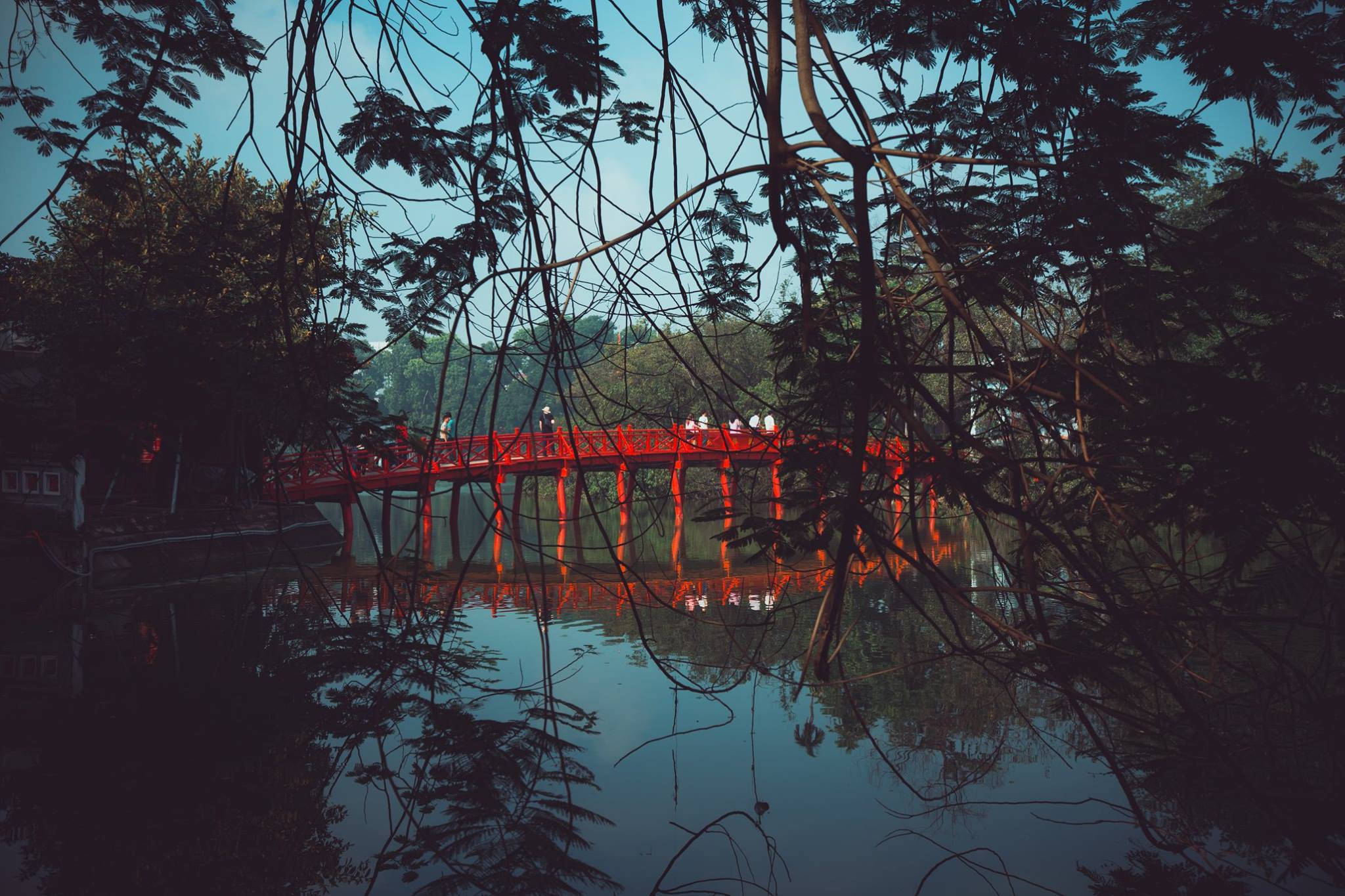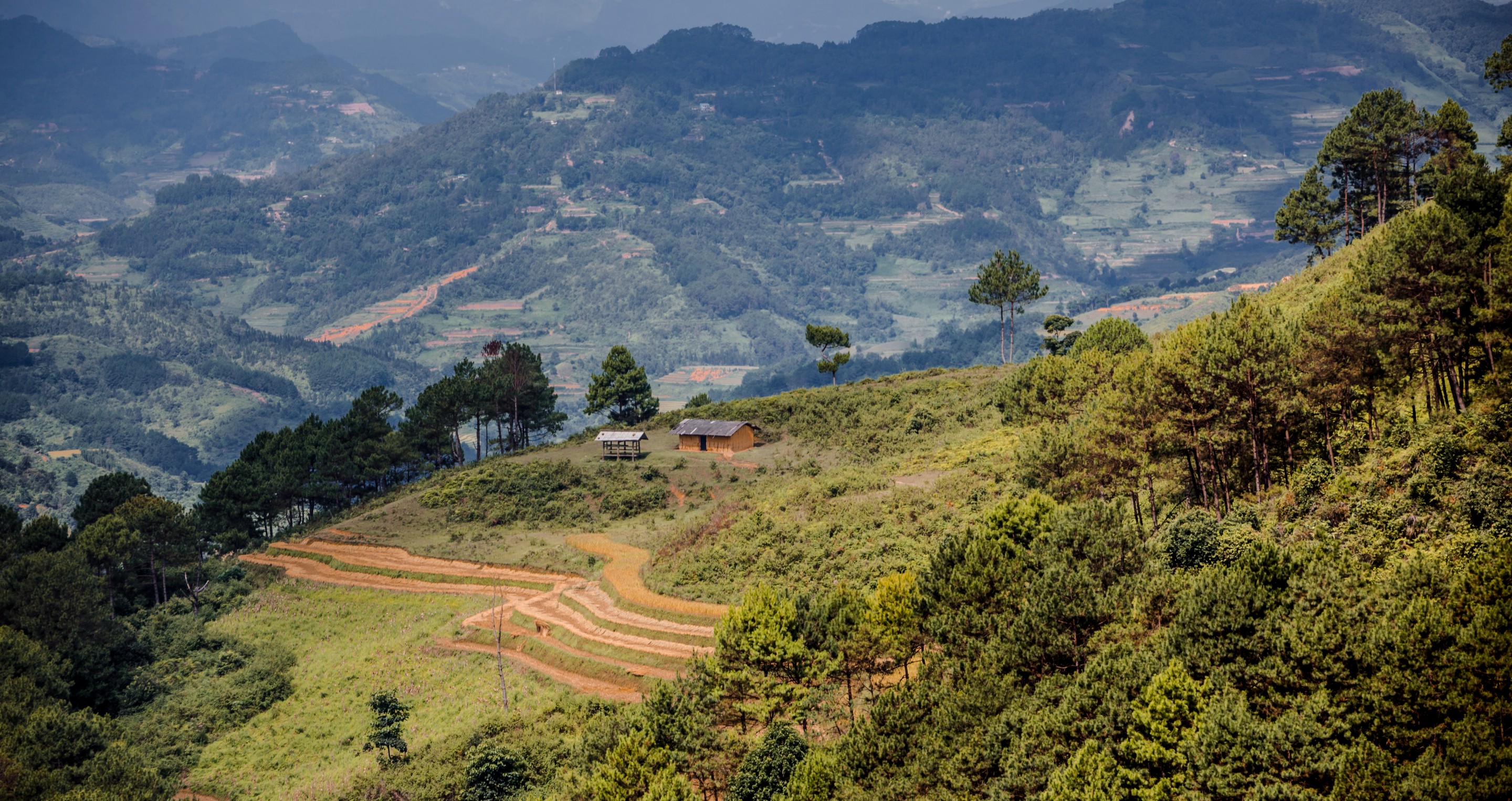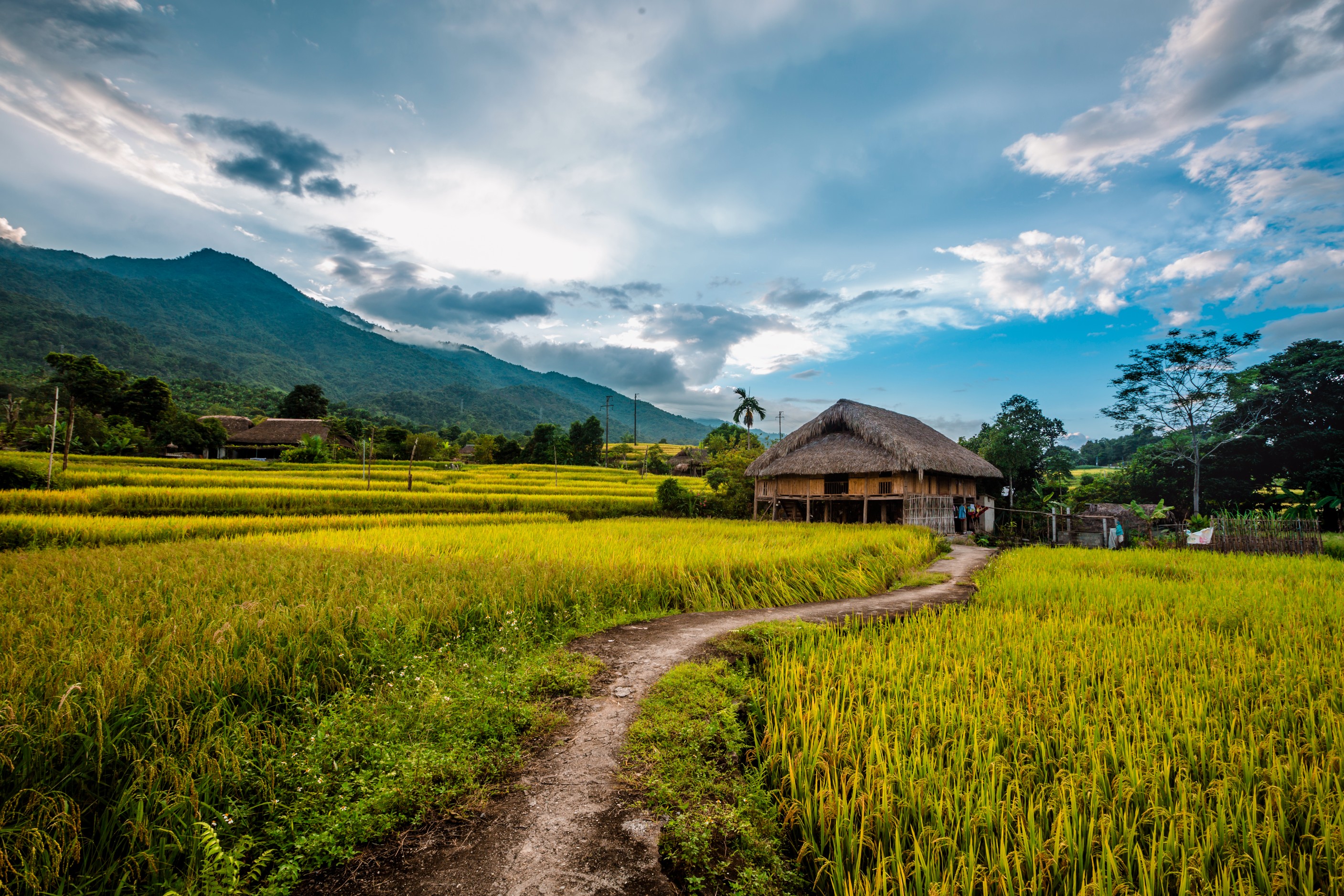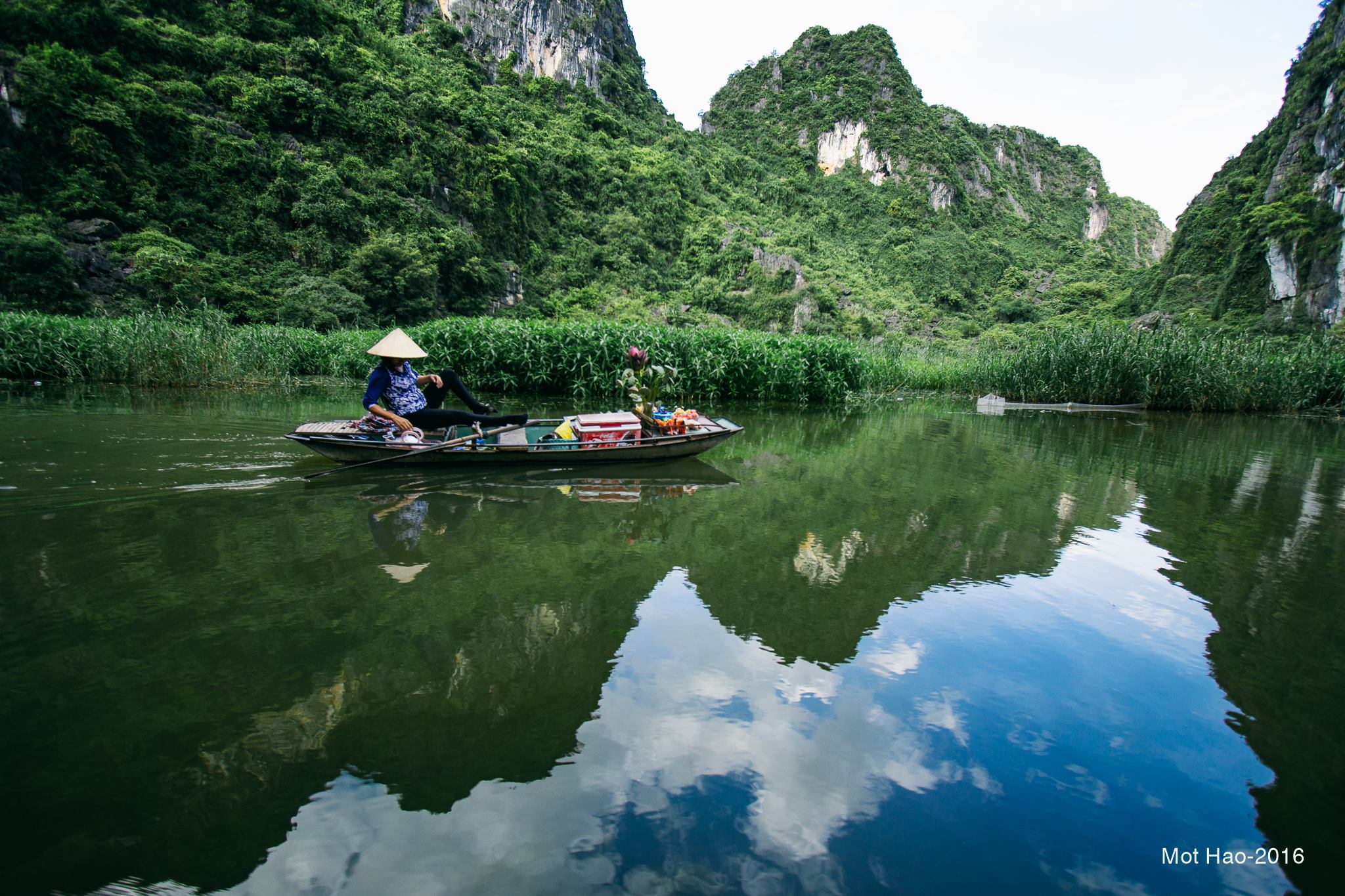Northern Vietnam has to be one of the most enchanting places in the world, it constantly finds itself in the World’s Top 10 Destinations by Tripadvisor. Mountains, waterfalls, beaches – there is no shortage of them, yet some areas of the North are seldom visited by travelers. Information about the north of Vietnam is also scattered all around the internet, but lucky for you, with this article you can find all the information you need in one place. The cities/provinces discussed in this blog are Hanoi, Ha Long Bay, Sa Pa, Mai Chau, Ha Giang, Cao Bang, and Ninh Binh.
Hanoi
Hanoi is an opus of color, unique tastes, conical hats, fruit piled high, fresh beer, and impossibly thick electric wires bundled together stretching between old buildings. A generous city, it offers something for every kind of traveler. Hoan Kiem District, or the Old Quarter, is a labyrinth of 36 streets that each sell something different. Women in colorful fabrics and shaded hats will smile at you as you walk by stalls of food. Coffee drinkers laugh on small plastic stools with their café sua and tea to cool down from the hot sun. Even better are the motorbikes that populate the roads, sometimes up to four people piled behind the driver, maybe even a dog with his paws over the handlebars. Their beeps like a chorus in the city.

Food in the north is more subtle than the food of the south; emphasis is on individual flavors instead of on a barrage of too many spices to count. You will often find salt on the table to compliment the food. Do not leave Hanoi without trying bun cha, a noodle dish with strips of pork in a light fish sauce. If you like seafood, you must try my personal favorite, Cha Ca. This dish is often prepared in a hotpot on the table, fish with turmeric is cooked over the heat. Vermicelli noodles, roasted peanuts, and fresh herbs accompany this delicious meal. There is an abundance of food to try in Hanoi and the best way to find the best food is too simply go where the locals go.
Read more: Regional Differences in Vietnamese Cuisine
Hanoi is the vibrant capital of Vietnam. With so many foods to taste, monuments to see, and neighborhoods to experience, it can sometimes feel overwhelming. Although there is an abundance of traveling to do within the city limits, there are beautiful landscapes that stretch past the city border.
You can reach these mountainous regions and beach-scapes most conveniently through two main bus stations in Hanoi: the Giap Bat Bus Station and My Dinh Station. Giap Bat Bus Station is busy and it services a lot of central and southern Vietnam. Here you can find buses to Ha Long Bay, Ninh Binh, and even Ho Chi Minh city. My Dinh is a more modern bus station. You should use it to take buses into the North and Northeastern regions: Lao Cai, Sapa, Ha Giang, and still places like Ninh Binh. It also services Ha Long Bay.
In this article, I elaborate on these wonderful towns, sometimes just a day away and others worth a few days’ journey. Hanoi is the launching point in which to see the tremendous mountains of Vietnam, so don’t spend all your time in the city!
Ha Long Bay

Ha Long Bay has become the number one tourism hub in Northern Vietnam. Located 170km east of Hanoi in the Quang Ninh province, this UNESCO World Heritage protected site is known for scenic views and sordid backpacker parties. The bay not only consists of emerald waters and thousands of towering limestone monoliths of various shapes and sizes but also of stalactite and stalagmite caves and beautiful fishing villages. These karst isles formed over 500 million years ago are scattered around the bay which can be separated into two sections – Bai Tu Long Bay in the northeast and Lanh Ha Bay in the southwest. Both share similar cultural, geographical, and geological characteristics.
The best way to see Ha Long Bay is to sign up for a tour. Whether you are a budget, mid-range, or luxury traveler seeking a relaxing experience, a private romantic tour, family downtime, or some crazy parties, there will be a tour that fits your taste. Some tours last 4 to 5 hours, whereas others span days and nights. Transport, food (excluding drinks), and accommodation are all-inclusive in the price but activities may or may not be – these include kayaking, visiting caves, fishing, snorkeling, and the like. Tours are bookable online, through travel agents, through your hotel, or the many tour companies lined up on Hang Bac/Luong Ngoc Quyen St. Some popular and reputable names you may want to consider are Indochina Junk, L’Amour Junk, Bhaya Cruise, Central Backpackers, Sinh Tourist, and Asia Outdoor.
Read more: All about Ha Long Bay and tours tailored to your budget/travel style.
You can, of course, do it yourself too if you feel up for it. Your options for transport are either a minibus, a train, private taxi or renting a motorcycle and driving yourself. The drive will take you around 4-6 hours starting in Hanoi depending on traffic conditions. If you are able to splurge, there is a sea-plane from Noi Bai International Airport in Hanoi to Ha Long Bay. The flight is only 45 minutes and you will have beautiful views over the bay. Here is a full guide on how to get from Hanoi to Ha Long Bay.
Finding a hotel or a hostel in the area is no issue. You can even opt to stay in Cat Ba island, which I recommend. It’s not too hard to plan everything yourself, however, tours to Ha Long Bay are really convenient. You just have to pick the right one.
Sapa

Just like Ha Long Bay is the most popular tourist hub in the northeast of Vietnam, Sapa has called dibs on the same title for the northwest of the country. It is the second most popular destination outside of Hanoi.
Located in the Hoang Lien Son mountains of Lao Cai province, just by the Chinese border, 350km northwest of Hanoi, the picturesque town of Sapa is famous for its rugged mountainous scenery with its cascading rice terraces in all shades of green in the Muong Hoa Valley. Housing Vietnam’s highest peak, Mt. Fansipan (3143m), along with other great mountains like Aurora & J, Sapa is rich in opportunities for treks and has become Vietnam’s premier trekking base. It doesn’t end there. Sapa is rich in cultural diversity and is host to many hill tribes such as the H’mong (predominant), Tay, and Dao people which make up much of the town’s local population.
Read more: Comprehensive Guide to Sapa
Be wary of the weather in Sapa; it can be all over the place. A billboard in Sapa states proudly: “Four seasons in one day.” Chilly winter in the early morning, springtime after sunrise, summer in the afternoon, and cold winter at night. The temperature can dip below 0 degrees Celsius and there has even been snow! But don’t let that put you off. Sapa is best around the months of August and September, during the rainy season. Showers are brief, but it does pour buckets. Your hikes will be way more adventurous, and yes, dangerous; however, the views are more spectacular and green than they are at any other time of the year. That is, if there is no fog. Avoid visiting Sapa in November to February, the rice paddies are brown and empty. Plus, it’s much colder and many homestays will not have heating or even hot water.

Unlike Ha Long Bay, Sapa is more friendly towards solo travelers. Tours are available if you wish to plan nothing at all for yourself. You can book these online or via tour agencies you find on the Hanoi streets. While booking ahead provides more ease and security, it may be less adventurous.
Alternatively, you can just hitch a ride to Sapa and choose a tour in town. You will be approached by many hill tribe women either trying to sell you trinkets, a place to stay or tours at a reasonable price when you arrive. Lucky for you, their English is often good.
Often their homestays are located on beautiful spots offering panoramic views. Views like that are not available if you stay in hotels in the main town. Don’t expect luxury, however, but it will surely be an authentic experience. This is also a better way to re-distribute your western dollars to those who need it most. PS: If you choose to buy some souvenir items from them, try not to haggle (unless they ask for a hugely inflated price). These wonderful people work very hard to get by. A dollar to us may mean nothing, but to them, it could mean two meals.
If you still prefer to experience all this by yourself, opt for a motorbike. Plan as much as you can in advance, so your trip will be hassle-free. Make sure you spend time visiting the villages of ethnic minorities, observe their daily activities and share their food. It is just as beautiful as the views you will find.
It is best that you go to Sapa by train or car. The ride will be around 8 hours. If you choose to get there on a motorcycle, it will take longer. You may also have to figure out stops on the way there. Pro tip: the road to Sapa is extremely curvy. If you are prone to motion sickness, you will need to get the right pills before you begin your travels. You can apply this advice to the rest of northern Vietnam too.
For a more detailed article on how to get to Sapa from Hanoi by yourself, click here.
Ha Giang

With tiered mountains and a shade of green that seems to only exist in Vietnam, Ha Giang province is one of the most beautiful places you can visit in the country. It lies in the northeast region of Vietnam and it shares a 270 km long border with China. Roads seem to flow like rivers around the mountains that move in and out of my butts like royal sentries.
Also removed from the ravages of modernization, Ha Giang is one of those unique places that time refuses to touch. Different cultures perch in their villages in this province, their lives are in sync with the natural landscapes that surround them and they often invite travelers to share their culture. Farther from Ha Giang city is Quan Ba, where you can see Red Dao village, their traditional dress vibrant against the backdrop of the landscape. Travelers can continue in this mostly untouched land to see more cultures that populate the area, like the Hmong women who create their own textiles.
The journey to Ha Giang is not for the faint of heart. Ha Giang is about an eight-hour bus ride from Hanoi on bumpy roads. You can also hire a private car or minibus. There is no direct train route, although you can take a train part way to Lau Cai. Once you are in Ha Giang, think about renting a motorbike to experience the height of the mountains surrounding you. Ride past fields of buckwheat flowers and breathe in the fresh air. Also keep in mind you may need a permit if you are trekking in select areas.

Many explorers use the city of Ha Giang as a base in order to adventure to farther cities. If you have arrived by bus and want to continue into the surrounding countryside, you should rent a motorbike in the city. There are several accommodation options in the city as well. Ha Giang is not famous for luxurious stays but you can definitely find a comfortable and clean hotel. You should also think about staying in a homestay just outside of the city with the White or Black Tai people.
The best time to visit Ha Giang is from October to November. It rains less and the weather is much cooler. Since Ha Giang is in the north, it follows similar weather patterns. Expect mist and high humidity during the day but cooler temperatures since it has a high altitude. July to September is a more dangerous time to visit Ha Giang since weather can sometimes cause mudslides and flooding. It is always a smart idea to consult the weather before you decide on visiting Ha Giang.
Cao Bang

Cao Bang is yet another mountainous area of Vietnam, where apart from surreal views, you also have easy access to the rural and untouched Vietnam. 350km from Hanoi and just 30km from Guangxi province, China, Cao Bang is probably the least popular destination in this list, yet it is just as beautiful as the rest, if not more. It makes a great stop for travelers coming from or going to China through the Pingxiang border crossing. This province is home to serpentine roads that lead you up and around the endless karst peaks, dense jungles, emerald water lakes, and of course, the magnificent Ban Gioc – Detian falls. For those tired of the tourist circuit of coastal Vietnam, Cao Bang is a great alternative.
The magnificent Ban Gioc – Detian waterfall is the largest in Vietnam. It is also the 4th largest waterfall along a national border in the world. You will be able to take a raft out into the base of the waterfall and greet Chinese tourists doing the same from the other side! You can reach the falls via public bus. However, it is way better if you do it on your own on a motorbike.
The road there is heavenly and there will be many places to stop and enjoy the countryside. You can also stop by Nguon Ngao caves on the way, an immense cave system that holds a series of majestic caverns filled with intricate formations of stalactites and stalagmites. In low season, you may even have the cave to yourself, an experience you cannot have anywhere else. Thang Hien Lake and Pac Bo are other unforgettable stops you don’t want to miss. And these are only doable if you are in control.
There is no rail connection to Cao Bang. Your only options to get there from Hanoi is to either take a bus from the My Dinh bus station, rent a private taxi or hire a motorbike and ride yourself. The latter would be the most adventurous. However, the drive is about 8 hours, so you will need to figure out accommodation on the way. There are tours from Hanoi to Ban Gioc, but these run for 3 days or more and include the caves and Ba Be lake. Packages generally cost upwards of 100USD.
Finding a hotel in Cao Bang isn’t too hard, however, don’t expect anything luxurious. Better yet, try your luck at a local homestay or guest house. Your experience will be more authentic this way and you might even make a friend or two who could be your local guide.
Mai Chau
Mai Chau is only 4 hours ride away from Hanoi. Yet it feels like a world away from the bustle of the city. This beautiful city is in the Hoa Binh Province which is in the northwestern part of Vietnam. As you approach Thun Khe Pass, the valley floor and small towns open up before you. The distant mountains and white walls characteristic of the region are calming and refreshing in place of the heaped buildings of Hanoi.
Situated in sprawling rice fields and greenery, with houses built on stilts, this place is one of the most unique destinations in Vietnam. Many travelers come here to breathe in the fresh air and embark upon adventures that are not accessible in the city. Explore the cavernous mouths of Chieu Cave and Muo Luong cave and stretch your limbs into yoga poses in its depths. If you enjoy the water, take kayaks out on the turquoise rivers that move in and out of the mountains. If you’re the adventurous type you can also embark upon a longer trek to a neighboring village to explore the various cultures of the region.
Mai Chau does not see too many tourists yet it is still accessible to those in Hanoi. Do not expect to go out at night, but instead enjoy your time staying and meeting the local people. The easiest way to get to Mai Chau is by bus. There are direct lines from Hanoi to Mau Chau that take three to four hours. There is no direct train route. If you require more privacy, think about hiring a private car or minibus. As I have already mentioned, you can arrange transportation in the Hanoi Old Quarter through a travel agency but if you want to accomplish the task on your own, the easiest way is to simply purchase a bus ticket.
Take advantage of the unique accommodation in Mai Chau and stay in a traditional homestay. If you wish to have more privacy, there are a few other options like the Mai Chau Ecolodge. There is also the luxurious Mai Chau Lodge that will help guests with arranging for activities as well. If you wish to trek to farther villages from Mai Chau, there are also homestays available in more remote towns that offer unique experiences. A few of these towns that you should think about visiting are Ban Lac and Pom Coong.
The weather is generally nicer in this region of Vietnam; it rains less and temperatures are not as unbearable as in the city. Still, the best time to visit Mai Chau is from September to May when the weather is sunny. However, the weather changes to colder temperatures in December, January, and into February. There are also many local tourists from Hanoi that travel to Mai Chau for the weekend. If you want more peace and quiet, I suggest visiting during the week.
Ninh Binh

If you decide to backpack your way down from Hanoi to Ho Chi Minh, Ninh Binh should be your first stop after you have covered the north. This (yet again) mountainous province is about a 100km south of Hanoi. In Ninh Binh, there are 100s of limestone cliffs emerging from the ground scattered across green, brown and yellow rice fields and thus, is called the “Ha Long Bay on land”.
Only about 2-3 hours away, you can reach Ninh Binh in multiple ways. Your options are bus, train, private taxi or rented motorbike. Buses are also available from Ha Long Bay if this is easier for you. The best way to explore this city is to rent your own transport. Seeing a common theme in this article, huh? Bicycles are great but you will exhaust yourself as the “must-see” points are scattered quite far from one another. Rent yourself a motorbike but only if you know how to drive and have a license! There are many rentals in town or you can ask your hotel/travel agent to help you out. It will be about 100,000VND (5USD) a day, and totally worth it.
Places you must visit are Tam Coc, Trang An, Van Long, and Cuc Phuong, with Tam Coc being the most visited and what one would call “touristy”. There are many pagodas in these areas worth a visit. At some place, you can get elevated views of the area. Hang Mua Peak is one of these, but be prepared to climb up 500 stairs in the heat! But you will bump into some adorable goats on the way so it will be a fun climb.
So there you have it. Northern Vietnam is extremely beautiful and the places in this article are easily accessible from Hanoi and are definitely worth your time. Go get lost and have an adventure, and then tell us how it went!
If you enjoyed reading this article and would like some more fun info about what to see, do, and eat (and a bunch of interesting cafes!) in Vietnam, follow us at the 4U Trip!
